Click on the Avenger for a high-res gallery of our flex-fuel tester
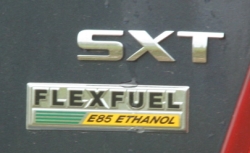 Here at ABG we've written pretty extensively about flex-fuel vehicles over the past year but we've never actually tried one out for a first hand evaluation. Thanks to Chrysler, that has now changed. They loaned us a 2008 Dodge Avenger SXT with the 2.7L V-6 with flex-fuel capability. There are now two gas stations with E85 pumps in Ann Arbor within a few minutes of the AutoblogGreen garage.
Here at ABG we've written pretty extensively about flex-fuel vehicles over the past year but we've never actually tried one out for a first hand evaluation. Thanks to Chrysler, that has now changed. They loaned us a 2008 Dodge Avenger SXT with the 2.7L V-6 with flex-fuel capability. There are now two gas stations with E85 pumps in Ann Arbor within a few minutes of the AutoblogGreen garage.
Chrysler delivered the Avenger with a full tank of regular unleaded gasoline of which about three quarters was consumed over the next few days of mixed highway and stop and go driving. Once the gasoline was used up, the tank was topped off with E85 from a Meijer gas station in Ann Arbor. Michigan based Meijer stores have installed E85 pumps at twenty of their stations across Michigan and the Ann Arbor station also had pumps in place dispensing B20 biodiesel and natural gas.
Read more about the Avenger and running it on ethanol after the jump.
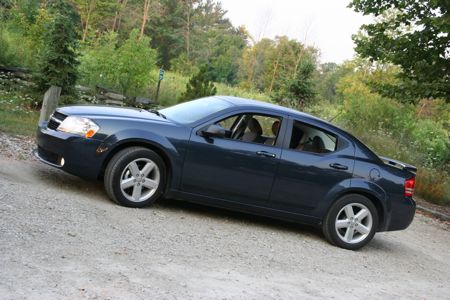
The Avenger is the Dodge-branded version of Chrysler's latest mid-sized car platform and replaces the Stratus in the lineup. When the Stratus debuted in 1994, it replaced the last of the Chrysler's long line of K-Car derivatives and brought the cab-forward design idiom to the mid-size category. The second-generation model kept similar proportions but lost some of the character of the first generation model. However, aside from the grilles and taillights both generations looked almost identical to their Chrysler badged counterparts.
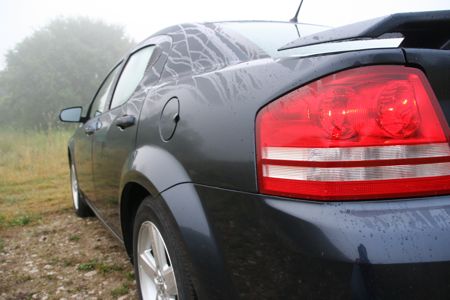
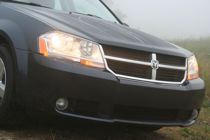 The new Avenger now looks distinctly different from it's Sebring stable-mate and that's largely a good thing. While the styling of the new Sebring has been almost universally panned by reviewers, the Avenger has generally gotten a better reception. The Avenger gets a look that's mostly borrowed from the full-sized Charger on a smaller scale and with a more attractive nose. The most distinctive styling element of the Charger is the curved rear shoulders that are carried over pretty much intact to the mid-size model. Unlike the Charger's forward sloping nose with Ram-like stand apart grille, the Avenger's nose is tilted back and more smoothly integrated into the face. The test car came finished in a dark blue color dubbed Modern Blue Pearl Coat. Frankly it wasn't the most attractive shade of blue I've ever seen and it wouldn't be my first choice but fortunately there are plenty of other colors to choose from.
The new Avenger now looks distinctly different from it's Sebring stable-mate and that's largely a good thing. While the styling of the new Sebring has been almost universally panned by reviewers, the Avenger has generally gotten a better reception. The Avenger gets a look that's mostly borrowed from the full-sized Charger on a smaller scale and with a more attractive nose. The most distinctive styling element of the Charger is the curved rear shoulders that are carried over pretty much intact to the mid-size model. Unlike the Charger's forward sloping nose with Ram-like stand apart grille, the Avenger's nose is tilted back and more smoothly integrated into the face. The test car came finished in a dark blue color dubbed Modern Blue Pearl Coat. Frankly it wasn't the most attractive shade of blue I've ever seen and it wouldn't be my first choice but fortunately there are plenty of other colors to choose from.
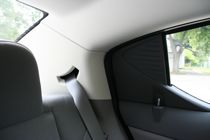 While the new Sebring seems to have had a kitchen sink full of disparate design elements thrown at it combined with some awkward proportions, the Avenger's look is generally better thought out. Unfortunately one design element it does share with the Sebring is the absurdly thick C-pillars and huge chunk of black plastic trim covering the back part of what should be the rear side window openings. The logic of this design is a complete mystery.
While the new Sebring seems to have had a kitchen sink full of disparate design elements thrown at it combined with some awkward proportions, the Avenger's look is generally better thought out. Unfortunately one design element it does share with the Sebring is the absurdly thick C-pillars and huge chunk of black plastic trim covering the back part of what should be the rear side window openings. The logic of this design is a complete mystery.
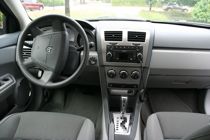 On the inside the Avenger is a similarly mixed bag. While the arrangement of controls and instruments is logical and looks reasonably attractive at first glance, it also feels really cheap. There is a plethora of hard plastic surfaces everywhere you look. The texture of the dash board surface looks really artificial. The plastic trim panel on the center stack is supposed to look like a satin finish aluminum but is clearly plastic. Also on the subject of cheap feeling is the trunk lid. Closing the trunk comes with a decidedly hollow sound that feels like the lid has no structure to it.
On the inside the Avenger is a similarly mixed bag. While the arrangement of controls and instruments is logical and looks reasonably attractive at first glance, it also feels really cheap. There is a plethora of hard plastic surfaces everywhere you look. The texture of the dash board surface looks really artificial. The plastic trim panel on the center stack is supposed to look like a satin finish aluminum but is clearly plastic. Also on the subject of cheap feeling is the trunk lid. Closing the trunk comes with a decidedly hollow sound that feels like the lid has no structure to it.
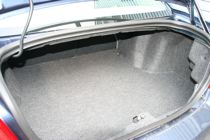 It's not all bad though. In spite of the cheap sound, the trunk does retain the four bar link hinges of the Stratus meaning they don't intrude into the storage space. That storage space is also well shaped and useful and looks bigger than it's rated 13 cu. ft. The back seats fold down in 60/40 split fashion and if you have bring home a few 2x4s a quick tug of the recline lever on the front passenger seat allows the seat back to flip forward and flat.
It's not all bad though. In spite of the cheap sound, the trunk does retain the four bar link hinges of the Stratus meaning they don't intrude into the storage space. That storage space is also well shaped and useful and looks bigger than it's rated 13 cu. ft. The back seats fold down in 60/40 split fashion and if you have bring home a few 2x4s a quick tug of the recline lever on the front passenger seat allows the seat back to flip forward and flat.
I personally owned a 1998 Stratus and drove it on a daily basis for almost eight years and 111,000 miles. Aside from the styling, which is always a matter of taste, one aspect of the Avenger that is distinctly different and changes the feel of the new car is the height. The Avenger is 4 inches taller than the original and over two inches taller than the last Stratus. The result is that like the Ford Five Hundred/Taurus the seating position is much more upright and chair like. In the old car your backside was a lot closer to the floor and you can feel the difference.
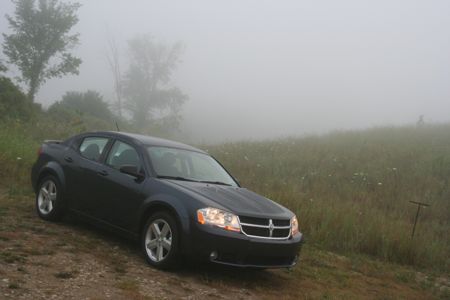
Another improved aspect of the Avenger is the front seats. They are relatively comfortable and provide good lateral support. The lateral bolsters grip around the upper part of the torso rather than down low. The advantage of this is that it fits different sized drivers and passengers better while still allowing easy entry and exit. The bolsters on the Saturn Aura seats grip lower on the back and work great for some drivers but not so well for those with wider torsos.
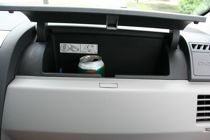 The back seat of the Avenger has plenty of space for five three people thanks to the upright stance with abundant leg, hip and shoulder room in the back. The center of the rear seat back features a fold down armrest with built in cup holders. Unfortunately that armrest also provides for a particularly hard area for a passenger in the center position. Road trips in the Avenger are made a little easier thanks to the refrigerated drink container on the passenger side of the dash that can hold four cans or bottles up to 16oz.
The back seat of the Avenger has plenty of space for five three people thanks to the upright stance with abundant leg, hip and shoulder room in the back. The center of the rear seat back features a fold down armrest with built in cup holders. Unfortunately that armrest also provides for a particularly hard area for a passenger in the center position. Road trips in the Avenger are made a little easier thanks to the refrigerated drink container on the passenger side of the dash that can hold four cans or bottles up to 16oz.
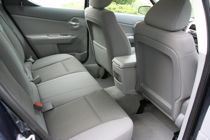 Among the available features that weren't included in the test unit were the rear seat entertainment system and the MyGig entertainment system. For anyone with an MP3 player, the latter probably isn't necessary, since the factory stereo has an auxiliary input plug on the front. The rear seat entertainment systems are generally pretty handy for those taking road trips with the kids.
Among the available features that weren't included in the test unit were the rear seat entertainment system and the MyGig entertainment system. For anyone with an MP3 player, the latter probably isn't necessary, since the factory stereo has an auxiliary input plug on the front. The rear seat entertainment systems are generally pretty handy for those taking road trips with the kids.
On the road the Avenger was again kind of a mixed bag. The suspension tuning seems like it was done by two different teams. The spring rates seemed to be well chosen with good roll control and firm but still compliant ride that keeps the optional 215/55R18 tires on the road and never feels harsh even on the nastiest of roads. Unfortunately, whoever chose the dampers didn't seem to have quite as good a grasp on things. In Michigan where roads rarely stay smooth for any length of time after laying down the pavement, the wheels absorbed the imperfections but the body got floaty and felt disconcerting. The steering had good weighting as far as effort, but feedback was nil. Mild under-steer was the order of the day on twisty roads and the overall impression was an odd combination of good, stable grip with disconnected controls and body.
The Avenger was equipped with standard anti-lock brakes (optional on the base SE trim level) but traction and electronic stability control is a $475 extra cost option on the SXT trim level. The base SE and mid-level SXT both have front disc/rear drum brakes as standard equipment but the test unit had the optional rear disc setup. Even the top level R/T doesn't get the stability and traction control standard. The brake pedal feel was good and brakes were easy to modulate.
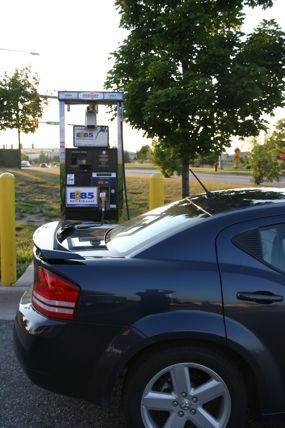 The 2.7L V-6 like the new 2.4L global four cylinder are relegated to the old four speed automatic transmission. Only the optional 3.5L gets the new six speed auto box. This means that the engine has to run through more of it's rev range than many of it's current competitors which feature five and six speed units. The 2.7L V-6 itself was a smooth running if not particularly strong unit. At a mere 186hp and 192lb-ft of torque compared to 173hp for the 2.4L four cylinder the only real benefit to the bigger engine is the flex fuel capability.
The 2.7L V-6 like the new 2.4L global four cylinder are relegated to the old four speed automatic transmission. Only the optional 3.5L gets the new six speed auto box. This means that the engine has to run through more of it's rev range than many of it's current competitors which feature five and six speed units. The 2.7L V-6 itself was a smooth running if not particularly strong unit. At a mere 186hp and 192lb-ft of torque compared to 173hp for the 2.4L four cylinder the only real benefit to the bigger engine is the flex fuel capability.
Much has been written here and elsewhere about the costs and benefits of running on ethanol vs gasoline. While ethanol definitely has less energy per gallon than gasoline, it has significantly higher octane ratings than the pump gasoline that is typically available in North America. Running ethanol in an engine that has been optimized for gasoline without modification will result in significantly less power output and greater fuel consumption. Thanks to modern electronic engine controls engines today can dynamically adjust many of their operating parameters. That means that factors like spark timing, valve timing and air/fuel ratio can be adjusted on the fly. Turbocharged and supercharged engines have an additional advantage in that they can run significantly higher boost pressures when running on ethanol.
When the Avenger's 16.9 gallon tank was filled up with regular unleaded gasoline, the acceleration was best described as leisurely. Compared to my old Stratus which had a 132hp 2.0L four cylinder and five speed manual, the Avenger actually felt slower. The situation changed noticeably after filling more than three-quarters of the tank with E85. When the biofuel was pumping through the injectors, the engine felt decidedly stronger. Response to the accelerator was much more immediate and passing maneuvers were much less tenuous.
The issue that is in some ways perhaps more important to readers of this site than performance is of course efficiency. Here the order was reversed with gas taking the lead. With a petroleum distillate in the tank, the Avenger only managed a mediocre 23.3mpg. With ethanol in the tank the mileage dipped down to 20.5mpg. Neither figure is particularly impressive especially compared again to my old Stratus. After 111,000 miles it still averaged 30-31mpg on the same driving cycle. Much of that degradation can surely be blamed on the four speed automatic and the extra 500 lbs that the Avenger carries compared to its ancestor.
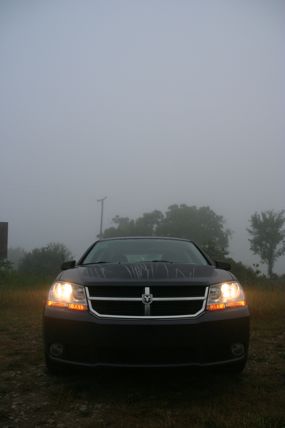 The base Avenger SE starts out at $18,345 while the SXT kicks off at $19,120 and the R/T goes up from $22,995. The test example added the flex-fuel V-6, convenience group(heated seats, mirrors, remote start, etc.) and sport appearance group (the 18" wheels, spoiler, etc) bringing the total including delivery to $22,275. The Avenger now also has a lifetime power-train warranty (at least for the original owner) which should provide some extra peace of mind.
The base Avenger SE starts out at $18,345 while the SXT kicks off at $19,120 and the R/T goes up from $22,995. The test example added the flex-fuel V-6, convenience group(heated seats, mirrors, remote start, etc.) and sport appearance group (the 18" wheels, spoiler, etc) bringing the total including delivery to $22,275. The Avenger now also has a lifetime power-train warranty (at least for the original owner) which should provide some extra peace of mind.
Overall the Avenger is an exceptionally roomy mid-sized car with a very reasonable bottom line price. That price comes at the cost of relatively mediocre fuel economy, limited features and a generally cheap feel compared it's direct competition. If you have access to E85 and want a car in this size class that can use it, the Avenger and Sebring are currently the only cars that can use it. The flex-fuel Dodge does get a performance benefit from ethanol but requires more fuel. At a $0.30 per gallon ($2.69 for E85 vs $2.99 for regular) discount when I filled up it almost comes out even on an economic basis. The environmental benefits of ethanol are still an open question but the beauty of a flex fuel vehicle lies in that flexibility. If the vehicle you buy has that option, you can use gas today and as more ethanol particularly from cellulosic sources comes on stream you can switch over and do you part to reduce fossil fuel consumption. Longer term electrified vehicles using some kind of range extender or improved batteries will probably make today's questions irrelevant, but who knows when that will be.
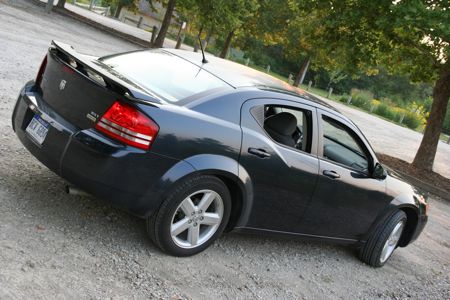
Other cars in the AutoblogGreen Garage:
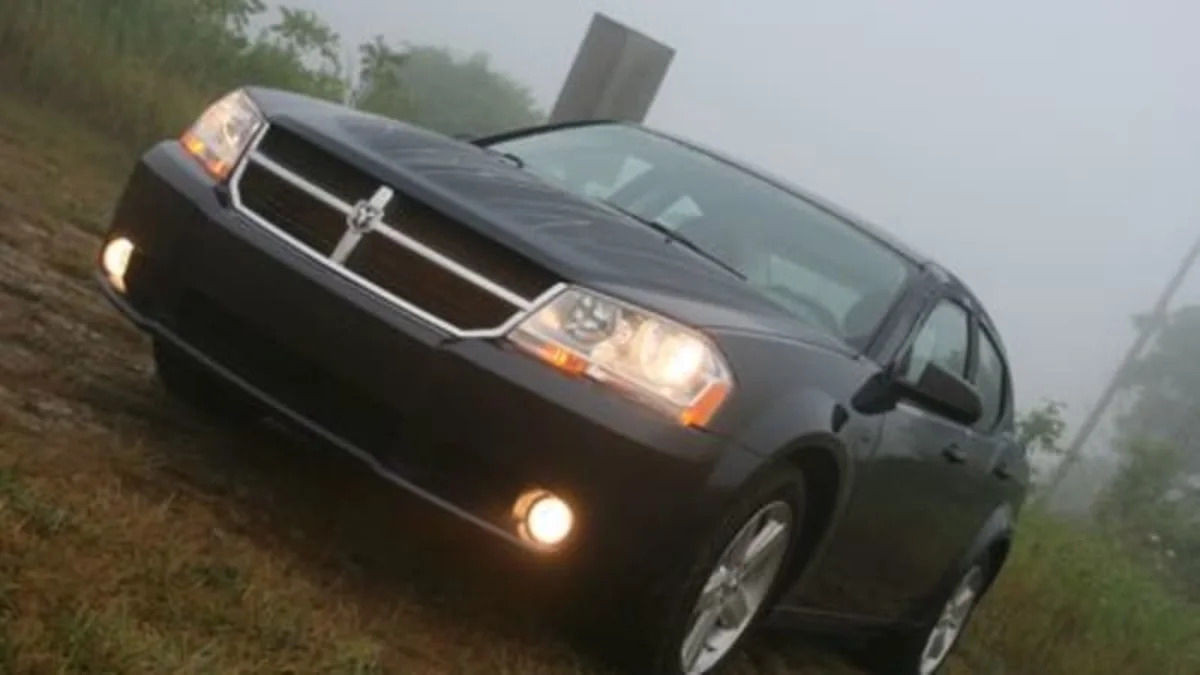

Sign in to post
Please sign in to leave a comment.
Continue